Propagation of lemon by cuttings and growing at home
Potted lemon is a popular houseplant. It has beautiful glossy leaves and long-lasting flowering with delicate, white or creamy flowers with a pleasant aroma. During the fruiting period, the tree produces miniature, bright and tasty fruits.
Lemon can be grown pitted fruitbought at the supermarket. In this case, the first fruiting is expected no earlier than 5 years later. If you propagate the plant by cuttings, you can bring this event closer by 1-2 years. How to grow a lemon from a cutting and where to get good planting material, read on.
The content of the article
Cutting lemon at home
Growing indoor citrus fruits from cuttings is the easiest way. Unlike plants obtained from seeds, they bear fruit already at 3-4 years of age. In this case, you can grow varietal lemon, not wild.
note! Pitted lemons tend to be more hardy.
Cuttings are sold in specialized stores and markets. Planting material can be independently separated from an adult plant from familiar gardeners or propagated by your own lemon.
Cutting lemon at home is a simple process. What should be the mother plant:
- Has no signs of disease or pests. Otherwise, the stalk will be a carrier of infection. Signs of disease include: slight turgor, yellowed, twisted or dried leaves, spots on greenery or shoots, cracks in the bark, cobwebs, small insects on the tree.
- It has already borne fruit at least once. This allows you to be sure that the daughter tree will also bear fruit.
- There are no flowers or fruits on the tree during grafting.
The beginning of spring (March - April) is considered the ideal time to obtain planting material. At this time, sap flow begins, which accelerates the survival of the shoot. Summer is also a good time, but root formation is slower in this case.
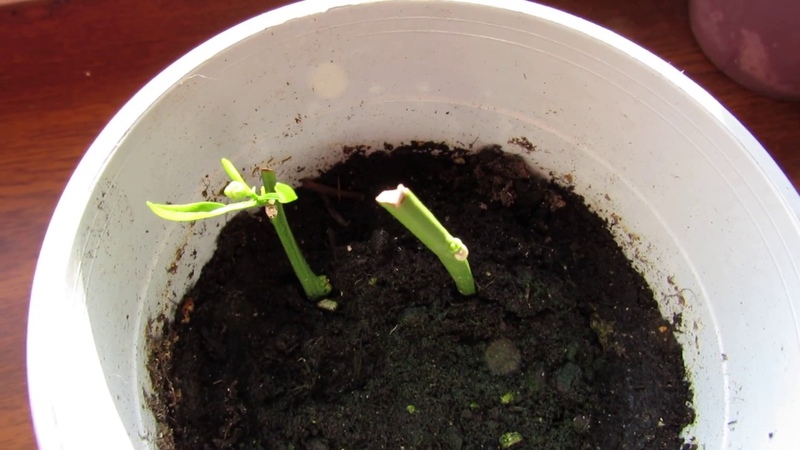
Winter and autumn are not suitable for lemon breeding. At this time, the plant is dormant, and this significantly reduces the likelihood that the planting material will take root.
Before grafting a lemon, choose a suitable branch. The stalk is cut from the top of a branch that is one year old. It is important that she has already stiff, but green bark, since young shoots do not always take root.
The selected piece of branch must have at least 2 leaves and at least 3 formed buds. The length of the handle is 8-15 cm.
The stalk is cut with a pruner or a painting knife at an angle of 45 °. Before making a cut, the tool is wiped with alcohol or ignited.
The place of the cut on the tree is treated with garden pitch. The tool is smeared with a dense layer.
note! It is not necessary to specially cut the cuttings. Branches cut during crown formation will do.
Growing lemon from cuttings
Cutting a lemon and planting the resulting material does not take much time. In order for the seedling to take root, step by step instructions are followed.
Preparation of planting material
Before rooting the lemon, the planting material is prepared. This is necessary to accelerate root formation and protect the plant from diseases.
The seedling is cut for an hour in a light pink solution of potassium permanganate. This will destroy the possible infection.
3-4 top leaves are left on the handle, the rest of the greens are cut off. The kidneys are not touched. Large leaf plates are cut in half, and small ones by a third.
Then the seedling is soaked for 12-24 hours in a rooting stimulator. Most often they use "Heteroauxin" (1 g of the drug is taken for 1 liter of water). After that, the cut of the cutting is dipped in crushed coal.
Rooting in water
The easiest way to root a lemon is without a substrate. The seedling is placed in water. The advantage of this method is that there is no need to prepare a soil mixture.
The term for the formation of lemon roots in this case is one and a half months. There is a possibility that the roots will not form, and the petiole will rot.
In order for rooting to be successful, it is important to know a few nuances:
- opaque container - a jug, a pot without drainage holes, etc.;
- lack of direct sunlight - the lemon is placed in partial shade, since a fragile seedling may not take root when exposed to ultraviolet radiation;
- warm water - not lower than + 25 ° С.
When a lemon is propagated in this way, the seedling is immersed in water. It is important that the liquid covers the process no more than 2 cm from the cut.
A plastic bag is pulled over a container with a seedling or covered with the top of a cut bottle. This is needed to create a greenhouse effect.
Periodically, the water is changed, preventing the appearance of an unpleasant odor and the growth of bacteria.
One of the options for adjusting the degree of immersion of the cutting in the liquid is wrapping it with a cloth to a height of 2 cm from the cut. The free end of the material is immersed in water, and the seedling is fixed above it. The wrapped part of the cutting will be constantly wet.
It is interesting! Some growers add small amounts of yeast to the water for rooting.
Rooting in the ground
Rooting a seedling in the ground requires the preparation of an optimal soil mixture, but it is considered the most reliable way. In this case, the chances that the cut will actually take root increase significantly.
How soon are roots formed in this case? Usually within 3-4 weeks.
For rooting, they immediately choose a pot in which the tree will grow throughout the year. Ceramic containers are best suited. It is imperative that there are drainage holes in their bottom. The diameter of the pot is 5-8 cm, and the height is up to 10 cm.
The container is disinfected: poured with boiling water or soaked in a dark pink solution of potassium permanganate.
Before grafting a lemon, prepare a soil mixture. It should be light and nutritious. As the main soil, use a universal soil or a special mixture for citrus fruits. They prepare the earth for lemons and independently: mix equal parts of peat, humus and garden soil.
Drainage is also required - chipped ceramics, broken brick, fine gravel, expanded clay, shell rock or special glass balls for plants.
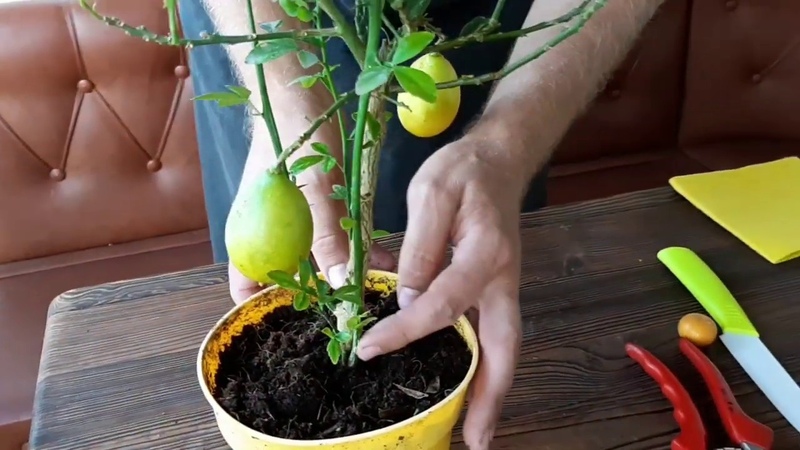
Drainage and soil are disinfected in one of the following ways:
- calcined in the oven;
- watered with a dark pink solution of potassium permanganate;
- pour boiling water over;
- poured with a solution prepared from 3 liters of water and 1 tsp. copper sulfate.
In the prepared pot, the soil is laid in layers in the following order:
- the first layer (1-2 cm) - drainage;
- the second layer (main volume) is a soil mixture;
- the third layer (1 cm) is peat or moss.
The last layer is laid after planting the seedling. It is not recommended to plant several cuttings in one pot.
Before planting a seedling, the soil is watered abundantly with warm water. Then the cutting is immersed in the ground so that it stands unsupported. A plastic bag is put on the seedling and the pot.
The first 2-3 weeks the seedling is regularly ventilated for 10 minutes. The soil is watered as it dries, the cutting is sprayed with water twice a day. It should stand in a place protected from direct sunlight.
When the lemon is rooted, the airing time is gradually increased. By the end of the fourth week, the film is removed. The pot with the plant is moved to the western or eastern windowsill.
When the lemon is rooting, the temperature in the house should be close to + 20 ... + 22 ° С.
If the plant is rooted in one common container, it is important to know how to plant a lemon. In this case, prepare pots with three layers of filler (drainage, soil mixture, mulch). From the container, carefully, together with a lump of earth, remove the cuttings that have taken root (when planting, the distance between the seedlings should be more than 5 cm). The seedlings, along with a lump of earth, are transferred to individual pots. The root system is evenly spread over the entire width of the pot. The plant is covered with 1 cm above the upper edge of the root system and watered.
The disadvantage of this method is that after transplanting the seedlings will take time to settle down. During this period, plants are protected from hypothermia and refuse to feed.
It is interesting! How else does lemon multiply? This can be done with the help of air layers. But this method produces the weakest plants.
Lemon tree care
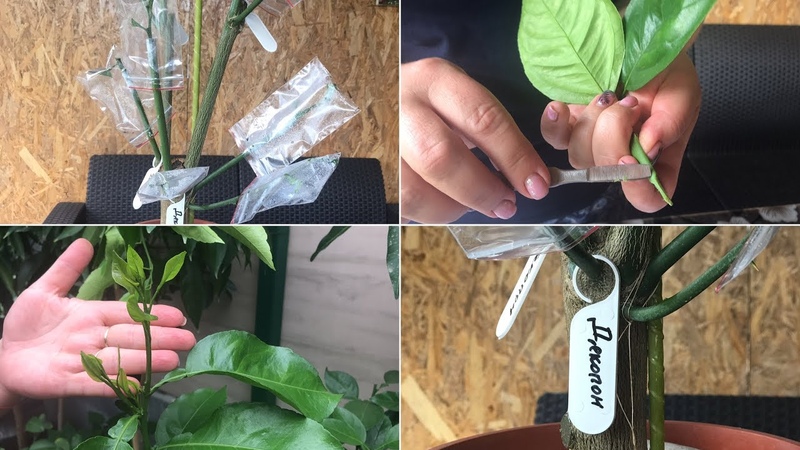
It is not enough to know how to take a scion from a lemon tree and root it. It is important to provide the plant with proper care. Then he will not get sick and will soon give a harvest.
Temperature
In the room where the lemon takes root, the optimum temperature is + 20 ... + 22 ° С. After the plant takes root, the indicators increase to + 26 ... + 28 ° С in the warm season. A comfortable temperature in late autumn and in winter is + 19 ... + 22 ° С. Fortified plants are able to survive cold snaps up to + 10 ° C.
Lighting
Lemon doesn't like direct sunlight. Therefore, it is better to place the pot on the western or eastern windowsill. If he stands on the south window, he is removed to a shaded place during the day.
A lemon's daylight hours lasts 12 hours, but since the plant is dormant in winter, it is not necessary to use phytolamps. It is recommended to rotate the pot in relation to the window weekly so that the shoots grow evenly.
Humidity
Lemon loves high humidity. To provide the necessary conditions, the tree is sprayed daily with water at room temperature. If the plant stands near a battery in winter, containers with water or a humidifier are placed near it.
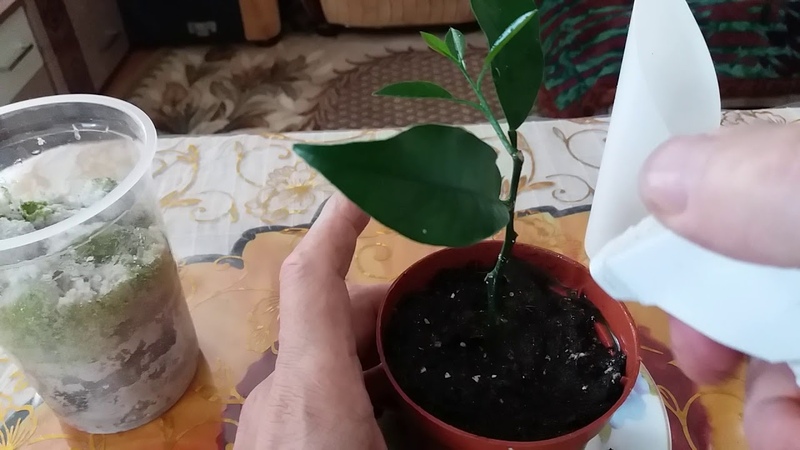
It is interesting:
The best ways to store lemons at home.
Recipes for delicious preparations of cucumbers with lemon for the winter in liter jars.
Cleaning and watering
Once a week, the leaves of the tree are wiped with a damp cloth. Once a month, the lemon is washed under the shower.
In summer, lemon is watered daily with warm, settled water. In winter, the amount of watering is reduced to 2 times a week. Some gardeners recommend pouring water into the tray that the pot is on.
Transplants
In the first year, it is recommended to transplant the lemon 2 times. The first time - in early summer, the second - in early autumn. Each time they take a pot that is larger in diameter than the previous one. The plant is taken out of the pot along with all the earth and rearranged into a new container. The missing volume is filled up with soil. Moss or peat is laid on top, which act as mulch.
Formation
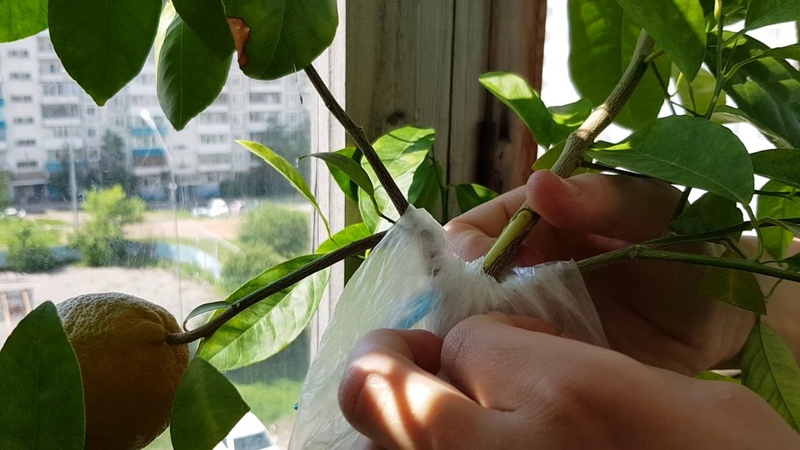
In the first year, it is not necessary to form the crown of the plant. During this period, shoots are allowed to grow. Shaping and pruning is done next spring.
Top dressing
Fertilizers are applied every 1-2 weeks. In winter, feeding is stopped.
It is recommended to alternate mineral and organic feedings. There are special preparations for citrus fruits - "Zdraven", Bona Forte, "Garden of Miracles". They are applied at the root and used for spraying.
Important! Chlorine is harmful to lemons. It is important to let the tap water settle to get rid of this substance. It is not recommended to use top dressing containing chlorine.
Diseases and pests
The risk of contamination of lemon exists even in the first year of life. The houseplant is attacked by various types of fungi and gommosis.
To cope with diseases, all affected parts of the plant are cut off. Places of cuts, as well as ulcers on the bark, are treated with garden pitch. Additionally, the tree is sprayed with copper sulfate.If these measures do not help, use fungicides.
Pests also attack plants. They are brought in on infected planting material, they are transmitted from other indoor plants.
To get rid of insects, lemon is washed in the shower. After that, it is sprayed with a decoction of bitter herbs or soapy water. If this does not help, insecticides are used.
Important! To prevent relapse, all plants standing on the same windowsill with an infected lemon are treated.
To reduce the likelihood of tree infestation, the parent plant is checked for signs of disease or pests before the lemon is propagated. Even if they are not there, the cut is disinfected with a solution of potassium permanganate. All tools and materials with which the plant comes into contact are subject to disinfection.
Conclusion
Growing lemon from cuttings is easier than growing from seeds. With seed cultivation, the first crop can be obtained only after 4-7 years, cuttings cultivation brings this event closer by several years.
When growing lemon from cuttings, it is important to take a responsible approach to the selection of planting material and planting it. Otherwise, the tree will grow weak and hurt.